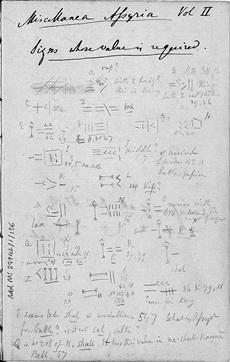In the computer age, paper notebooks are seemingly no longer used in scientific research, but for centuries they were an indispensable tool for intellectual work. They were not only important as diaries or lab books in which results of scientific experiments could be recorded, but also as “thought journals” of learned gentlemen, thinking about diverse scholarly pursuits in fields like linguistics, history, mythology, literature, and more.
These books were ubiquitous, helpful, very important for scholars, and yet hardly ever talked about. As everyday objects, they rarely received a second thought as tools of thinking, and the greater part of research dealing with scientific notebooks is mainly interested in comparing its contents with later publications, tracing the thought process from the beginning to the end. The thought immanent in this approach is that notebooks mainly function as vessels into which thoughts can be poured and stored for later use. To Nele Diekmann, this perspective excluded important aspects of the instrumental role notebooks can play.
Thus, Diekmann's project did not aim to analyze the content of scholarly notebooks in order to find out about someone’s thoughts, but was interested in the question of how notebooks come into play during the thought process, how they can influence thinking and trigger epistemic processes. As an Assyriologist, she was particularly interested in the early history of the discipline, especially the means by which the ancient writing system known as Cuneiform has been deciphered. Two of the most important pioneers of Cuneiform research, Henry Rawlinson (1810–95) and Edward Hincks (1792–1866) did not leave many of their working papers behind, but a third figure from the early days of British Assyriology left a vast amount of interesting data: William Henry Fox Talbot (1800–77).
Fox Talbot was a rather typical Victorian polymath and gentleman of science, dabbling in diverse disciplines for most of his life (among them Botany, Etymology, Physics, Chemistry, Egyptology) before taking up Assyriology in his early fifties and spending the remainder of his life on studying cuneiform. This field of study proved to be the ultimate riddle Talbot had been looking for and he diligently worked on questions of philology as well as Assyrian religion and literature until he died in 1877, leaving almost 120 assyriological notebooks as his scientific legacy.
In her thesis, Nele Diekmann dealt with the ways in which pen and paper became "Talbot’s Tools," his paper tools that allowed him to explore the mystery of a hitherto very little known writing system. Questions of the "operativity" of script and its iconic qualities as well as matters of visual order and arrangement played a role, as well as the potential of notebook pages to become experimental and explorative spaces.

